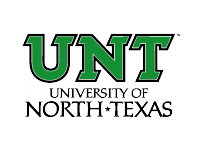Below is a summary of the abstract you submitted. Presenting author(s) is shown in bold.
If any changes need to be made, you can modify the abstract or change the authors.
You can also download a .docx version of this abstract.
If there are any problems, please email Dan at dar78@pitt.edu and he'll take care of them!
This abstract was last modified on May 5, 2017 at 10:05 a.m..

Students in the SEA-PHAGES program at the University of North Texas isolated, characterized, and annotated 11 novel bacteriophages using Streptomyces xanthochromogenes. S. xanthochromogenes was isolated from soil in Japan and is not infectious to humans. Three of the phages (Oliynyk, SqueakyClean, and BeardedLady) were sequenced at the University of Pittsburgh, while the remaining phages (Amethyst, Celeste, Daudau, Diane, Esperer, Ozzie, Sebastisaurus, and Tefunt) were sequenced at UNT. Of the phages isolated, five were characterized as BD1 (BeardedLady, Celeste, Esperer, Oliynyk, and Ozzie), five as BD2 (Amethyst, Daudau, Diane, SqueakyClean, and Tefunt), and one as BB2 (Sebastisaurus). The BD1 phages had an average GC content of 66.06% and an average genome length of 50,064 base pairs. The BD2 phages had an average GC content of 66.96% and an average genome length of 50,374 base pairs. The BB phage, Sebastisaurus, was only 41,609 base pairs long and had a GC content of 62.1%. A host range was performed for each phage, testing for infection on Streptomyces albus, Streptomyces azureus, Streptomyces griseus, Streptomyces venezuelae, and Streptomyces virginiae. The phages were annotated and gene functions were assigned bioinformatically. One interesting function included the function of Holliday Junction Resolvase, found in three phages (BeardedLady, Celeste, and Diane). This enzyme is required to ensure proper DNA segregation after homologous recombination, facilitated by four-way Holliday Junctions (HJ’s). The biological mechanisms relevant to HJ’s are still being explored, but the presence of Holliday Junction Resolvases in our phage could contribute to future research attempting to understand this process more completely. Finally, there is no conclusive evidence to suggest the presence of tRNAs in any of the phages that were isolated. One phage (SqueakyClean) appeared to contain a tRNA after a preliminary tRNA-scan. However, after further analysis using the program ARAGORN and a separate tRNA-scan, the supporting evidence was deemed insufficient, and the putative tRNA was removed from the phage genome.


